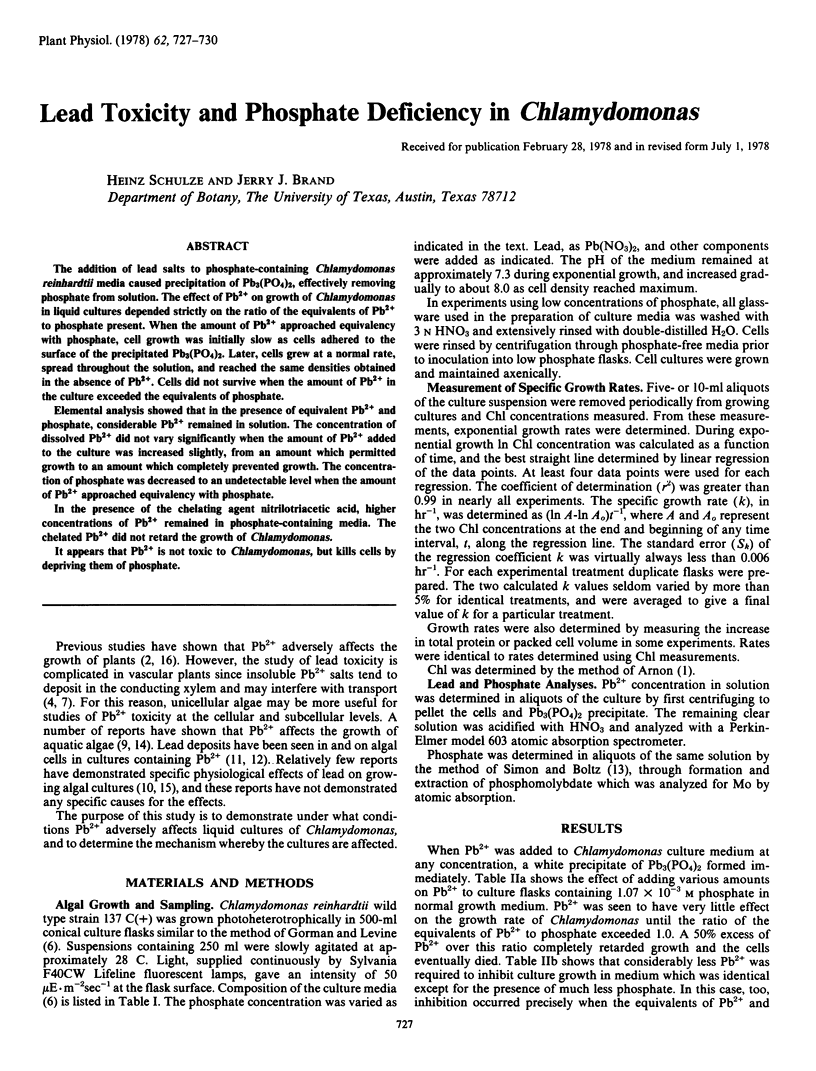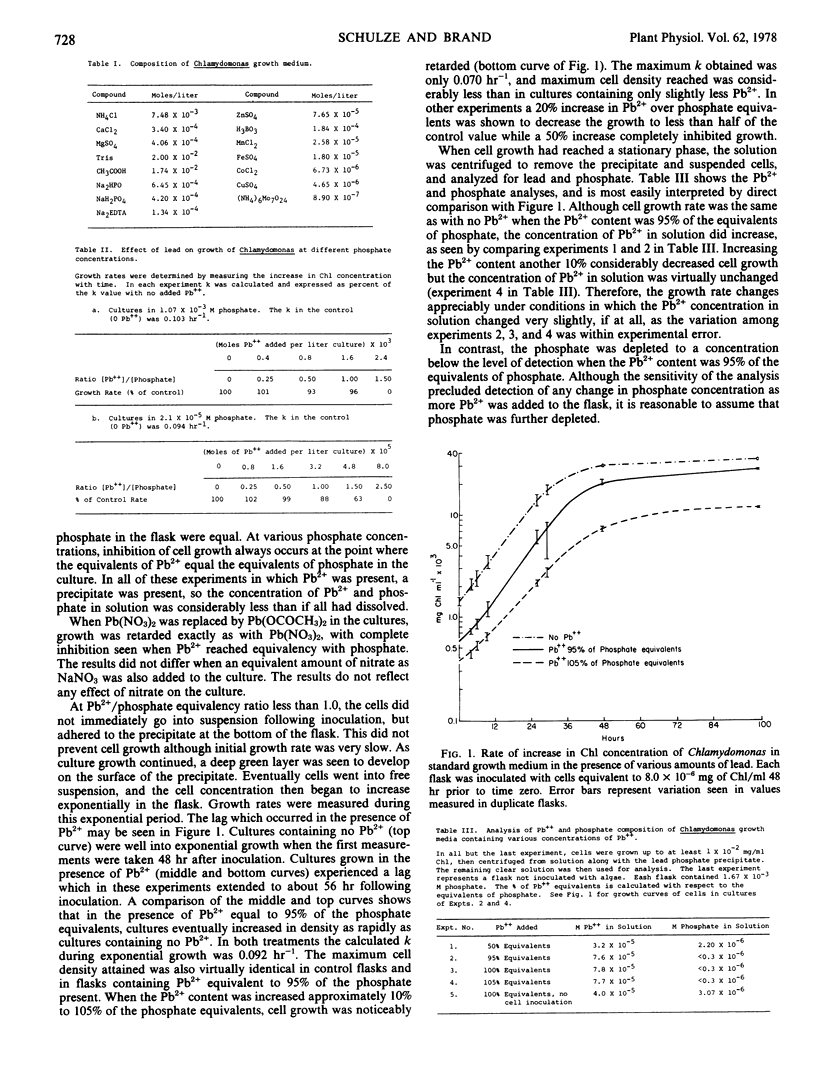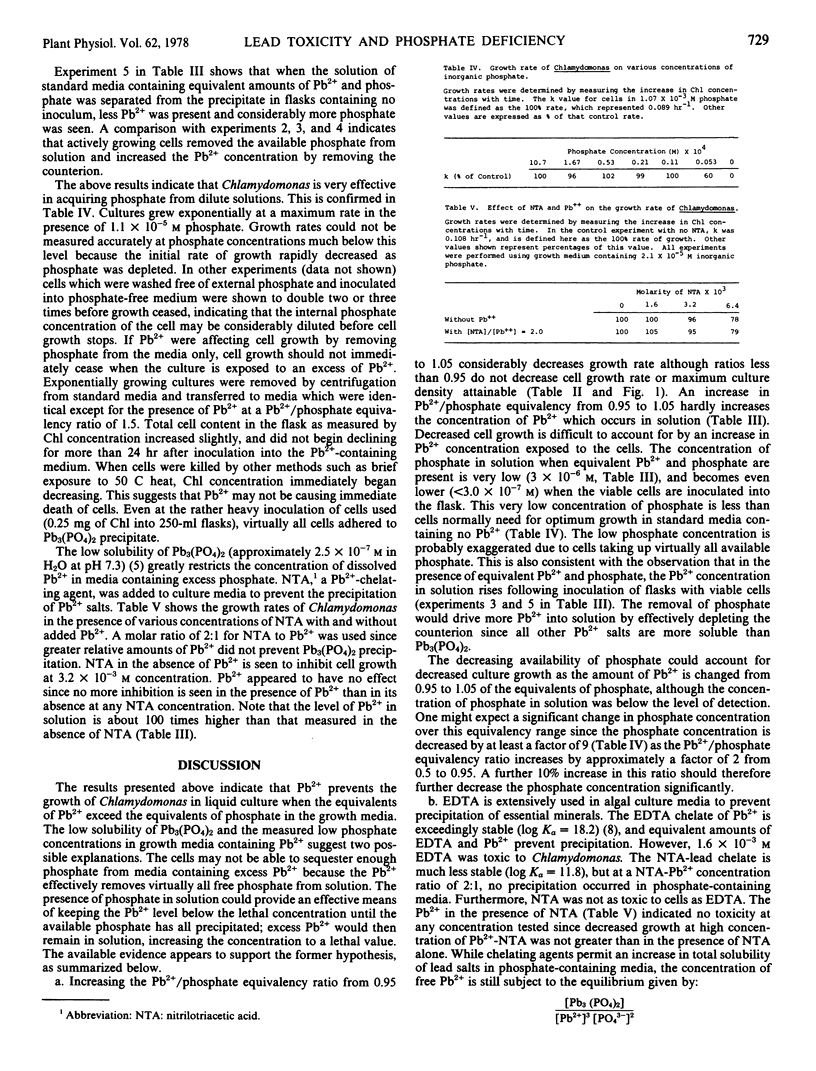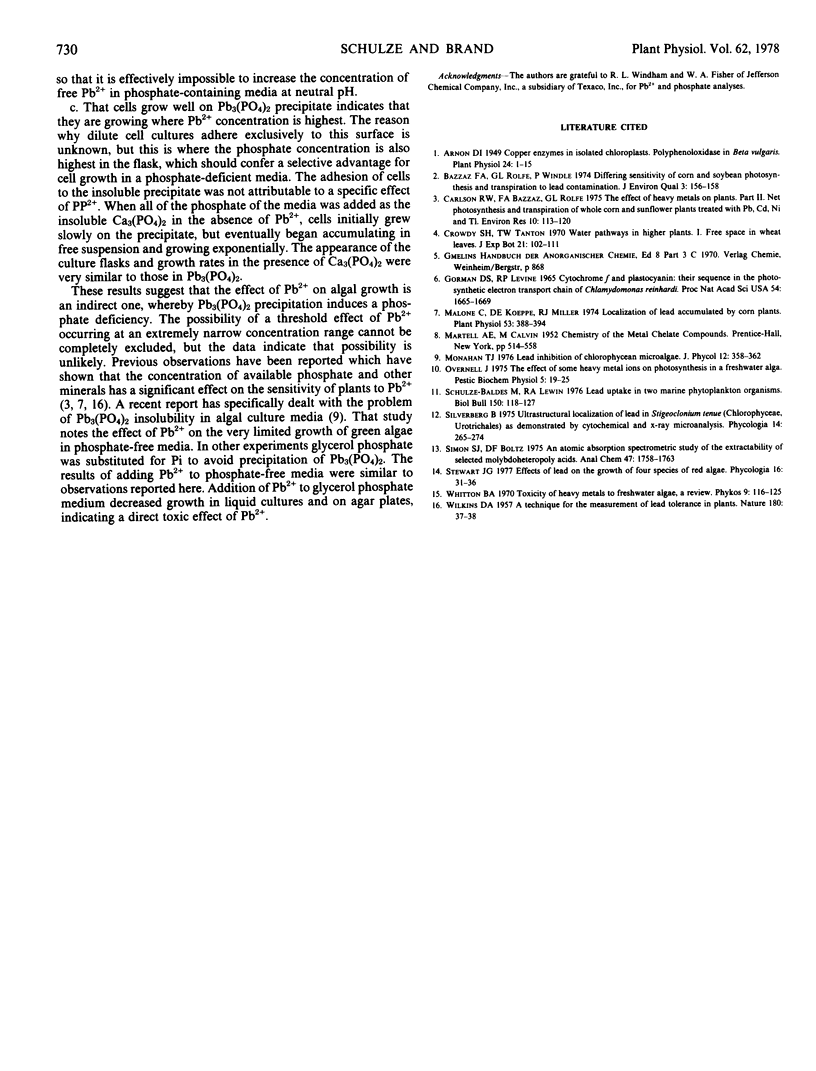Abstract
The addition of lead salts to phosphate-containing Chlamydomonas reinhardtii media caused precipitation of Pb3(PO4)2, effectively removing phosphate from solution. The effect of Pb2+ on growth of Chlamydomonas in liquid cultures depended strictly on the ratio of the equivalents of Pb2+ to phosphate present. When the amount of Pb2+ approached equivalency with phosphate, cell growth was initially slow as cells adhered to the surface of the precipitated Pb3(PO4)2. Later, cells grew at a normal rate, spread throughout the solution, and reached the same densities obtained in the absence of Pb2+. Cells did not survive when the amount of Pb2+ in the culture exceeded the equivalents of phosphate.
Elemental analysis showed that in the presence of equivalent Pb2+ and phosphate, considerable Pb2+ remained in solution. The concentration of dissolved Pb2+ did not vary significantly when the amount of Pb2+ added to the culture was increased slightly, from an amount which permitted growth to an amount which completely prevented growth. The concentration of phosphate was decreased to an undetectable level when the amount of Pb2+ approached equivalency with phosphate.
In the presence of the chelating agent nitrilotriacetic acid, higher concentrations of Pb2+ remained in phosphate-containing media. The chelated Pb2+ did not retard the growth of Chlamydomonas.
It appears that Pb2+ is not toxic to Chlamydomonas, but kills cells by depriving them of phosphate.
Full text
PDF



Selected References
These references are in PubMed. This may not be the complete list of references from this article.
- Arnon D. I. COPPER ENZYMES IN ISOLATED CHLOROPLASTS. POLYPHENOLOXIDASE IN BETA VULGARIS. Plant Physiol. 1949 Jan;24(1):1–15. doi: 10.1104/pp.24.1.1. [DOI] [PMC free article] [PubMed] [Google Scholar]
- Carlson R. W., Bazzaz F. A., Rolfe G. L. The effect of heavy metals on plants II. Net photosynthesis and transpiration of whole corn and sunflower plants treated with Pb, Cd, and Tl. Environ Res. 1975 Aug;10(1):113–120. doi: 10.1016/0013-9351(75)90077-8. [DOI] [PubMed] [Google Scholar]
- Gorman D. S., Levine R. P. Cytochrome f and plastocyanin: their sequence in the photosynthetic electron transport chain of Chlamydomonas reinhardi. Proc Natl Acad Sci U S A. 1965 Dec;54(6):1665–1669. doi: 10.1073/pnas.54.6.1665. [DOI] [PMC free article] [PubMed] [Google Scholar]
- Malone C., Koeppe D. E., Miller R. J. Localization of lead accumulated by corn plants. Plant Physiol. 1974 Mar;53(3):388–394. doi: 10.1104/pp.53.3.388. [DOI] [PMC free article] [PubMed] [Google Scholar]
- PATRICK A. D. Metabolism of acetate in Hevea brasiliensis. Nature. 1957 Jul 6;180(4575):37–37. doi: 10.1038/180037a0. [DOI] [PubMed] [Google Scholar]
- Schulz-Baldes M., Lewin R. A. Lead uptake in two marine phytoplankton organisms. Biol Bull. 1976 Feb;150(1):118–127. doi: 10.2307/1540593. [DOI] [PubMed] [Google Scholar]


